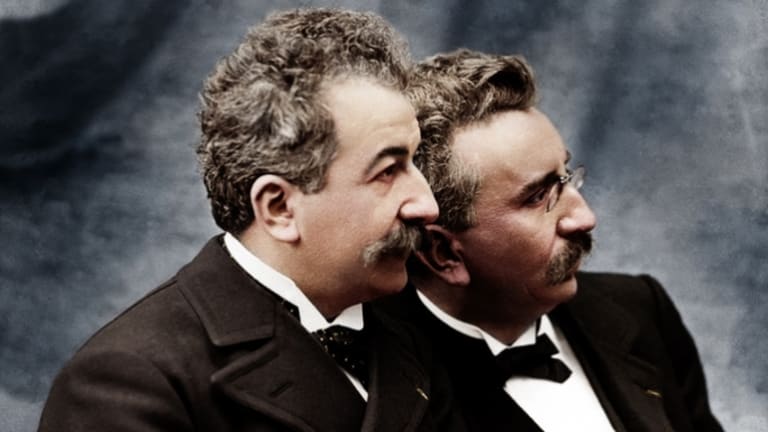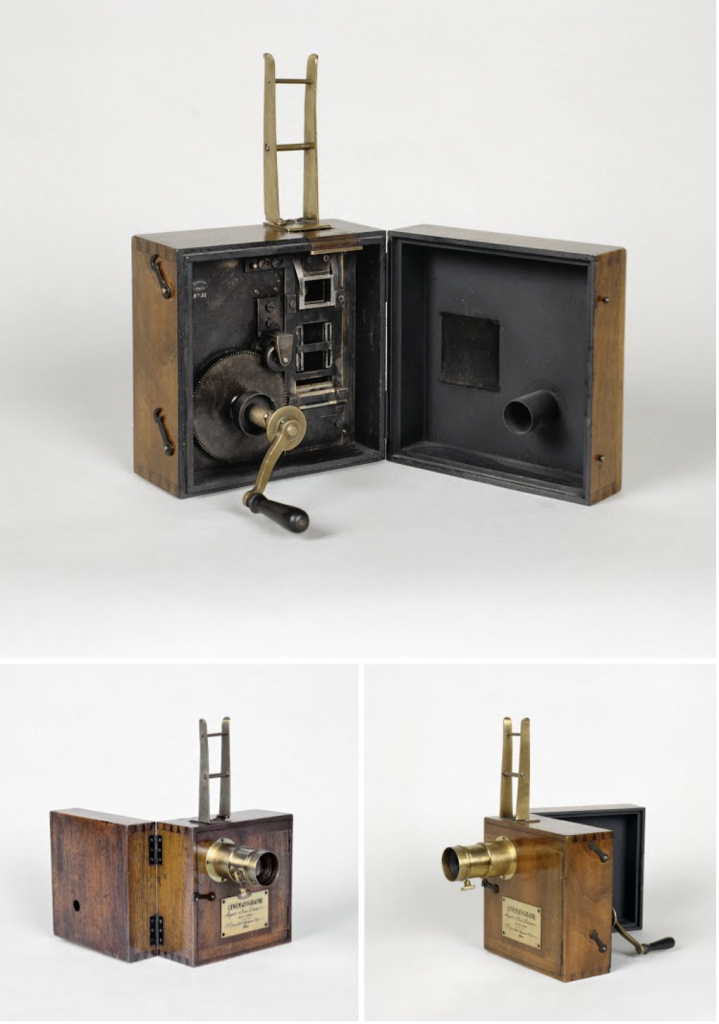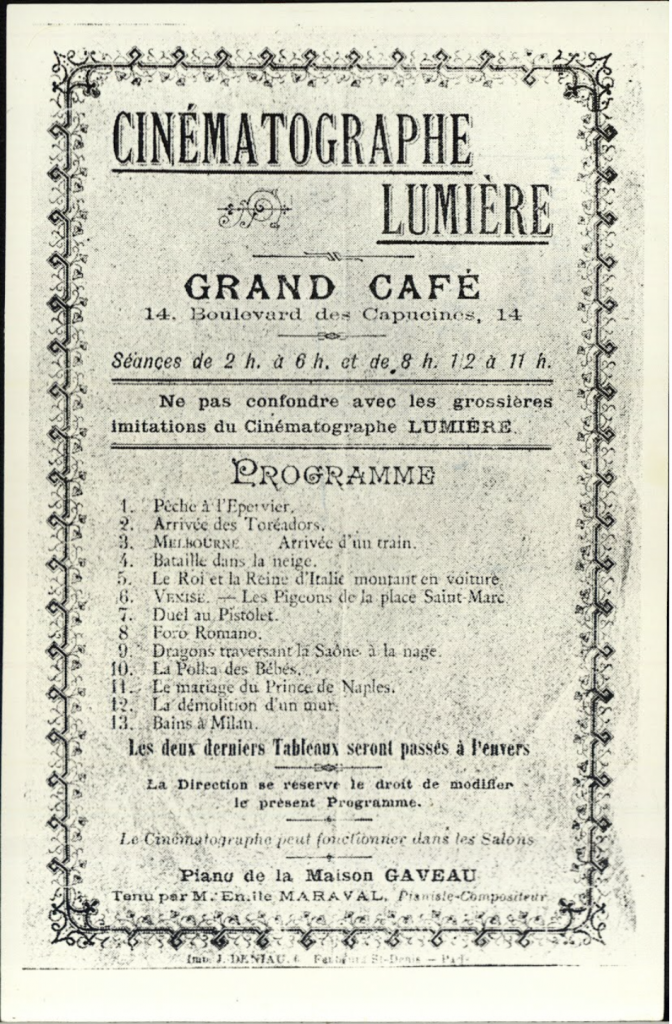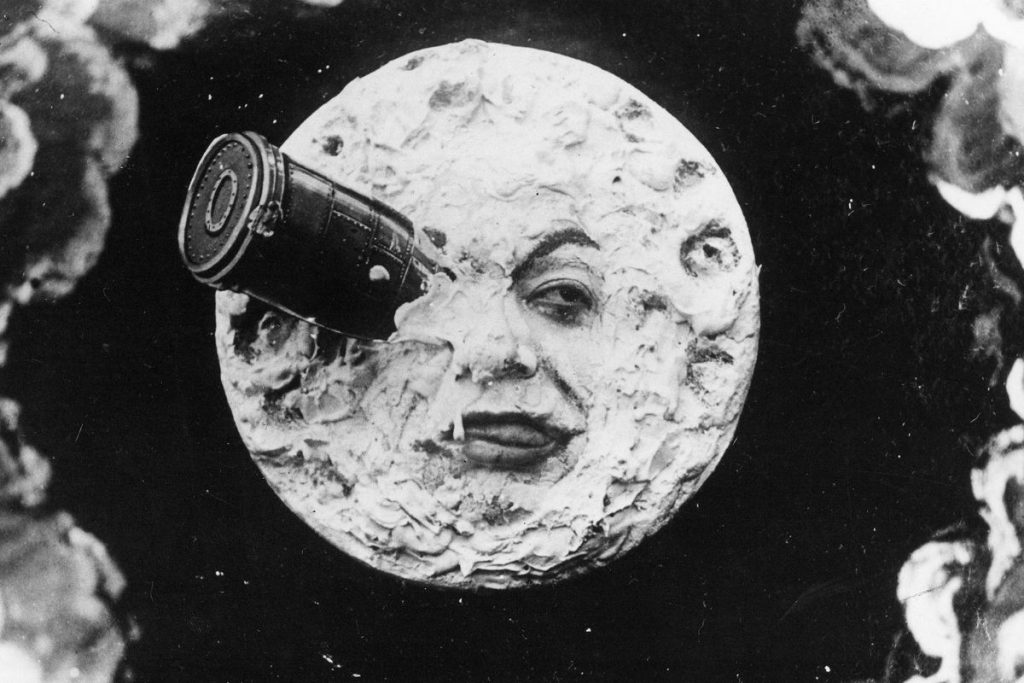Thinking about shooting a film or taking a photograph seems simple enough. A simple tap or click of a button will instantly produce an image or record what we wish to capture. While reading through the survey timeline, I was immediately drawn to knowing the history behind motion pictures and filmmaking when seeing the Lumiere Brothers were one of the first to screen moving pictures.
Who were the Lumiere Brothers?

Born and raised in France, the Lumiere Brothers were exposed to the world of photography through their father. Their family opened a business specializing in creating photo plates. Eventually, the two brothers took over and reinvented a new and improved type of photo plate. Having a background in engineering, photography, manufacturing, and business, certainly aided their desire to create the Cinematograph, a portable film screening device.
The cinematograph wasn’t just a regular film projector, it also served to develop and print film as well. The camera itself supported 35 mm film and projected at 16 frames per second. Although this may seem slow compared to current video cameras, this was groundbreaking at the time, considering most people were mainly exposed to still pictures and not moving ones.
The first film ever created by the Lumiere brothers was the “Workers Leaving the Lumiere Factory in Lyon-Monplaisir.” Interestingly enough, there were three versions made from this film. Others theorize it’s because new versions need to be created for various screenings. However, some believe the Lumiere Brothers were unsatisfied with the first two rolls overall. The second and third versions were said to be more cohesive and harmonious. This is mainly noted by how the actors and actresses dressed and overall acted when exiting out of the gates.
The first official screening of their works was held in the basement of the Grand Café. From there, one of the works the duo premiered on was the famous “The Arrival of a Train,” which awed the audience. Film historians believe this film alone impacted how we view films in general, in a way that could evoke emotions instead of simply viewing it for pleasure.
The Lumiere Brothers and George Méliès
One of the greater impacts the duo had on film history was how they influenced other filmmakers. In one of the private screenings to reveal the Cinematograph, George Méliès was in awe of the Lumiere Brothers and their invention. For years, he tried searching for a device like the Cinematograph. Eventually, he came across Animatograph, only to improve it so it served as a camera too.
Méliès first created movies like the Lumiere Brothers – the everyday lives of French people. However, this quickly changed after a camera accident that led to Méliès inventing editing. He realized one scene can jump to another, creating an entirely different scene from one shot after another. From then, he experimented more with how light affects the camera, leading to his invention of in-camera special effects, such as double exposure, split-screen, and matting. Méliès’ most known work, A Trip to the Moon, exemplified all of his techniques into a sci-fi film which was incredibly rare at the time. Even today, we can see appraisals of his work in modern-day films, such as Hugo, which wouldn’t have happened without the outstanding innovations of the Lumiere Brothers.
Sources
https://www.youtube.com/watch?v=aFkSjdaqbyE&ab_channel=CrashCourse
https://www.indiewire.com/2020/03/lumiere-brothers-workers-leaving-factory-anniversary-1202219698/
https://www.youtube.com/watch?v=L8is28gAOTc&t=219s&ab_channel=CrashCourse


